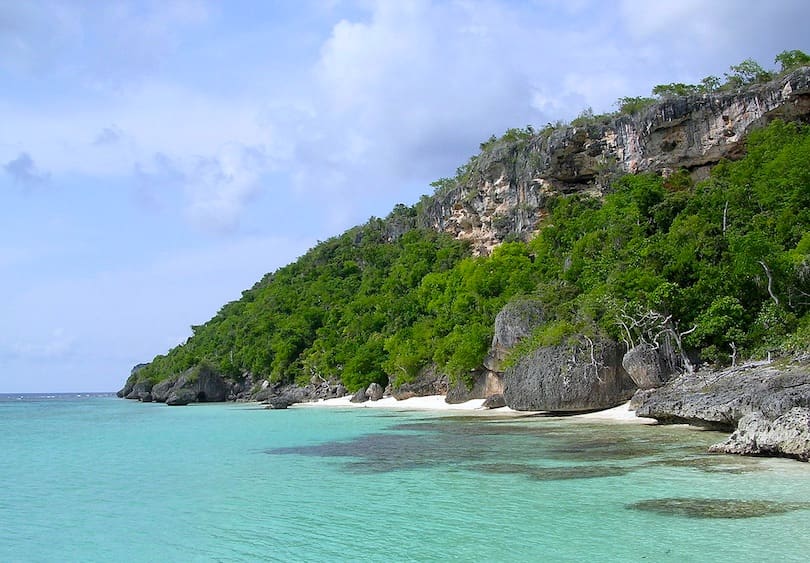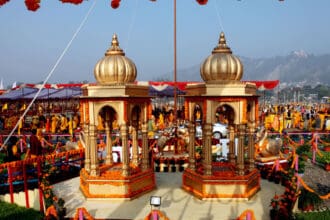Explore the wonders of the world’s 10 unique island ecosystems, from the lush rainforests of Borneo to the diverse marine life of the Galápagos Islands. Discover the beauty and complexity of these isolated paradises and learn about their ecological significance.
Introduction
Islands have always captivated the human imagination, with their isolation and unique ecological settings sparking wonder and curiosity. These pockets of biodiversity have evolved in splendid isolation, giving rise to extraordinary and distinct ecosystems. In this article, we will embark on a journey to explore the ten most fascinating and diverse island ecosystems across the globe. From the majestic Madagascar to the pristine beauty of the Hawaiian Islands, each destination offers a glimpse into the wonders of evolution and the delicate balance of life. So, join us as we unravel the mysteries of these remarkable 10 Unique Island Ecosystems of the World.
10 Unique Island Ecosystems of the World
-
The Enchanting Galápagos Islands: Where Evolution Comes Alive
The Galápagos Islands, located in the Pacific Ocean, have earned their place in history as the birthplace of Charles Darwin’s theory of evolution. These volcanic islands are teeming with extraordinary wildlife, including giant tortoises, marine iguanas, and blue-footed boobies. Explore the unique adaptations of species that have evolved over millennia, adapting to their distinct habitats.
- Learn about the famous Galápagos tortoises, known for their impressive size and longevity.
- Discover the incredible marine life surrounding the islands, from playful sea lions to colorful tropical fish.
- Understand the ongoing conservation efforts to protect this fragile ecosystem from human impacts.
-
The Tropical Rainforests of Borneo: A Biodiversity Hotspot
Borneo, the third-largest island in the world, boasts one of the most diverse rainforests on the planet. This lush ecosystem is home to endangered species like orangutans, pygmy elephants, and clouded leopards. Learn about the complex web of life in this dense jungle and the efforts being made to preserve it.
- Explore the intricate relationships between plants, animals, and indigenous communities in Borneo.
- Uncover the challenges of deforestation and habitat loss threatening the delicate balance of this ecosystem.
- Discover the conservation organizations working tirelessly to protect Borneo’s precious biodiversity.
-
The Serene Beauty of the Seychelles: A Tropical Paradise
The Seychelles, an archipelago in the Indian Ocean, is renowned for its stunning beaches, crystal-clear waters, and unique wildlife. Discover the rare Coco de Mer palms, giant tortoises, and vibrant coral reefs that make this island nation an environmental gem.
- Dive into the turquoise waters to witness the underwater wonders of the Seychelles.
- Learn about the conservation efforts aimed at safeguarding the native flora and fauna from invasive species.
- Understand the eco-friendly tourism initiatives that promote sustainable practices on these idyllic islands.
-
The Untamed Beauty of Madagascar: An Island of Endemic Species
Madagascar is a treasure trove of biodiversity, with a staggering number of species found nowhere else on Earth. From lemurs to chameleons, this island is a living laboratory of evolution and adaptation.
- Delve into the mysteries of Madagascar’s unique flora, such as the baobab trees and the rare orchids.
- Meet the playful lemurs, the charismatic ambassadors of Madagascar’s wildlife.
- Learn about the conservation challenges faced by this fragile ecosystem and the efforts to protect it.
-
The Majestic Islands of Hawaii: Where Volcanoes Shape Life
The Hawaiian Islands, formed by volcanic activity, are a testament to the remarkable resilience of life. Each island boasts its own microclimate and unique species, from the vibrant corals of Maui to the lush rainforests of Kauai.
- Discover the fascinating geology of Hawaii and the ongoing volcanic activity that shapes its landscapes.
- Dive into the colorful world of Hawaiian marine life, including humpback whales and green sea turtles.
- Learn about the importance of traditional Hawaiian cultural practices in conserving the islands’ natural heritage.
-
The Pristine Wilderness of the Galapagos Islands: Exploring the Enchanted Archipelago
The Galápagos Islands, located in the Pacific Ocean, have earned their place in history as the birthplace of Charles Darwin’s theory of evolution. These volcanic islands are teeming with extraordinary wildlife, including giant tortoises, marine iguanas, and blue-footed boobies. Explore the unique adaptations of species that have evolved over millennia, adapting to their distinct habitats.
- Learn about the famous Galápagos tortoises, known for their impressive size and longevity.
- Discover the incredible marine life surrounding the islands, from playful sea lions to colorful tropical fish.
- Understand the ongoing conservation efforts to protect this fragile ecosystem from human impacts.
-
The Spectacular Diversity of New Guinea: An Island of Wonder
New Guinea, the world’s second-largest island, is a paradise for nature enthusiasts. Its rainforests, mountains, and savannas harbor a wide array of unique species, including the stunning Birds of Paradise.
- Embark on a journey through the dense jungles to spot elusive and breathtakingly beautiful Birds of Paradise.
- Learn about the indigenous cultures that have lived in harmony with the land for centuries.
- Discover the threats posed by deforestation and climate change and the measures being taken to combat them.
-
The Exotic Galapagos Islands: A Haven of Evolutionary Marvels
The Galápagos Islands, located in the Pacific Ocean, have earned their place in history as the birthplace of Charles Darwin’s theory of evolution. These volcanic islands are teeming with extraordinary wildlife, including giant tortoises, marine iguanas, and blue-footed boobies. Explore the unique adaptations of species that have evolved over millennia, adapting to their distinct habitats.
- Learn about the famous Galápagos tortoises, known for their impressive size and longevity.
- Discover the incredible marine life surrounding the islands, from playful sea lions to colorful tropical fish.
- Understand the ongoing conservation efforts to protect this fragile ecosystem from human impacts.
-
The Stunning Reefs of the Maldives: A Marine Wonderland
The Maldives, a tropical paradise in the Indian Ocean, is renowned for its breathtaking coral reefs and marine biodiversity. Dive into the crystal-clear waters to encounter manta rays, whale sharks, and a myriad of vibrant fish species.
- Discover the delicate balance of the coral reef ecosystem and the threats posed by climate change and pollution.
- Explore sustainable tourism practices that aim to preserve the natural beauty of the Maldives.
- Learn about the efforts to protect endangered species and conserve the islands’ marine habitats.
-
The Magical Islands of the Philippines: An Archipelago of Diversity
The Philippines, an archipelago comprising over 7,000 islands, boasts a wide range of ecosystems, from lush rainforests to pristine beaches. Explore the rich marine life, rare wildlife, and unique geological formations that make this country a nature lover’s dream.
- Snorkel or dive to witness the incredible biodiversity of the Philippines’ coral reefs.
- Meet the tarsiers, one of the world’s smallest primates, found in the country’s dense forests.
- Learn about the conservation initiatives addressing the challenges faced by these diverse island ecosystems.
FAQs
- Are the Galápagos Islands the only place Charles Darwin visited?
No, Charles Darwin also visited other places during his voyage on the HMS Beagle, including the coasts of South America, Australia, and the Cape Verde Islands. However, his observations and studies on the unique wildlife of the Galápagos Islands played a pivotal role in the development of his theory of evolution by natural selection.
- What makes Borneo’s rainforest so biodiverse?
Borneo’s rainforest owes its incredible biodiversity to its ancient history, varied topography, and tropical climate. The island’s isolation allowed species to evolve separately, leading to the emergence of numerous unique and endemic plants and animals.
- Why are the Seychelles considered an environmental gem?
The Seychelles are considered an environmental gem due to their commitment to conservation and sustainable practices. The islands’ government and local communities have taken significant steps to protect their natural resources, preserve endangered species, and promote eco-friendly tourism.
- What is so special about Madagascar’s lemurs?
Madagascar’s lemurs are unique because they are found nowhere else on Earth. These charismatic primates have evolved in isolation for millions of years, resulting in a wide variety of species with fascinating adaptations and behaviors.
- How are the Hawaiian Islands formed?
The Hawaiian Islands were formed through volcanic activity. A hot spot in the Earth’s mantle has been feeding magma to the ocean floor, creating a chain of volcanic islands as the Pacific tectonic plate moves over it.
- What makes the Birds of Paradise so enchanting?
The Birds of Paradise, found in New Guinea, are known for their elaborate and vibrant plumage, as well as their captivating courtship dances. These avian wonders have fascinated explorers and naturalists for centuries.
Conclusion
The world’s 10 unique island ecosystems are a testament to the marvels of nature and the extraordinary diversity of life on our planet. From the remote Galápagos Islands to the enchanting Seychelles, each island offers a glimpse into a world shaped by millions of years of evolution. These ecosystems are not only wonders to behold but also serve as crucial reminders of the urgent need for conservation efforts to protect our fragile natural heritage. Let us cherish and preserve these paradises for generations to come, ensuring that their beauty and biodiversity endure for eternity.


